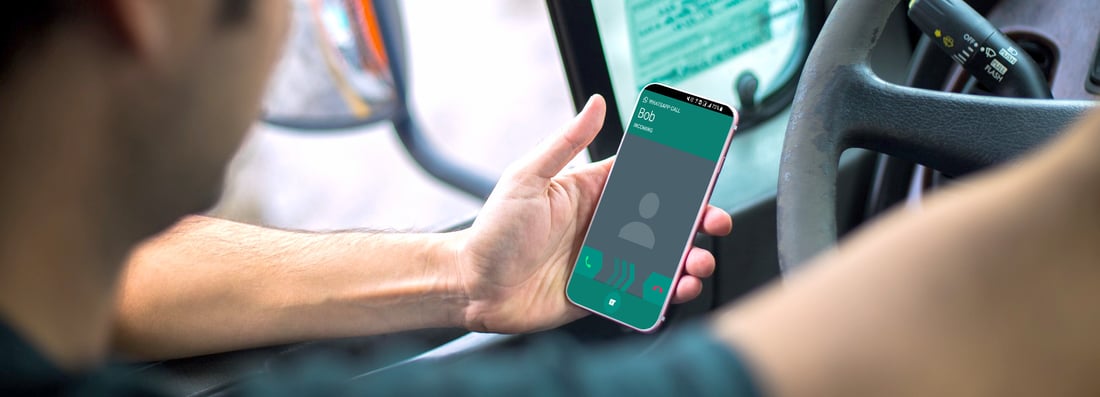By @Fernando Perez Maier, CRO & Co-Founder at RedGPS
In my previous article, "GPS Tracking Focused on Security: 2021 Guide," I discussed a situation that is very important to providers of GPS tracking, security companies, fleet operators and all people involved in our industry: when a GPS device stops reporting and fails to provide information about its location, status, and accessories.
I want to give you a step-by-step guide in case your GPS tracker stops reporting. Regardless of your expertise in this matter, I hope it's useful to you.
Table of contents
1. Introduction
2. Due to the GMS module
3. Due to the GPS module
4. Due to the platform
5. Due to programming or configuration issues
6. Due to physical installation in the vehicle
7. Recommendations
8. Conclusions
Introduction
First of all, It's important to understand the possibilities or factors that can bring this device back to life. For this reason, I'll provide a brief introduction on how GPS vehicle tracking or AVL (Automatic Vehicle Location) works.
A preconfigured GPS tracker is installed in the vehicle or asset to be tracked. This tracker consists of two modules, one GPS and one GSM. The GPS module connects to satellites to determine the vehicle's location, among other things. The GSM module sends information via SIM card to a GPS tracking platform through the cellular network (2G, 3G, 4G, Cat M1, Cat M2).

Now that we established how this industry works, I can tell you that all that is highlighted in bold in the previos paragraph is everything that can go wrong and the reason your tracker isn't reporting is related to one of these factors.
To begin with, it's important to say that a GPS tracker tested in a lab setting is very different to a tracker installed in an asset. The urgency and criticality are often different and this urgency can prevent us from thinking calmly and rationally to systematically eliminate possibilities and find a solution to the problem
When an asset gets frozen on the map of the platform, the operator in charge must perform quick tasks to identify the problem. Some of these can be done immediately, while others may require give aid to the vehicle.
I'll share with you many of the causes of this problem that I have experienced over many years in this industry. I hope you can complement them with your own experience
Let's start evaluating potential problems.
1. Due to the GSM module
Check whether there is cell service in the area where the asset is located. How can you tell if your GPS tracker is in an area without cell network service?
- To validate if there is coverage in the area, you can check with another asset that is nearby and see if it reports. If it does, you can rule out this point. If you don't have assets nearby, you can contact your customer and ask for their assistance in calling the driver. If the driver answers and has at least voice signal, that's progress. You could ask them to make a WhatsApp call to confirm they have data. This helps us determine that there is at least coverage from one TELCO (telecommunications company). After this, you can ask the driver which TELCO is using and compare it to the one you use for your service. Having the same TELCO doesn't necessarily mean your SIM card is working, as you might be using an M2M service, a VPN with the TELCO, or a special plan that I will explain later how to resolve. However, these steps are fundamental for ruling out possibilities.

- Another valid option is to call the phone number of the SIM card if your data plan allows this, and compare it with another GPS tracker of the same brand and model that works correctly and uses the same SIM card plan. This will help us see what response you get: if the call is disconnected, if it goes to voicemail, if it says it's out of service, etc. This step helps us identify any differences from a working device. In this case, if the call wasn't rejected, we might be able to send SMS commands
- Another possible scenario is that there is GSM coverage, but it doesn't support the frequency of your GPS tracker. For example, your tracker might use the 2G network, but the area only has 3G and 4G coverage, which is a very common situation.
- It also happens that the asset moves and resumes transmitting to the platform. If this is the case, validate if the device transmits buffer data. If at the end of the day you have the complete route and data for the asset, it means it was a GSM issue because when the device regained signal, it sent all the history it had in memory. If you have large gaps and incomplete information, the problem could be with the GPS module, the device installation or the GPS tracking platform.
- Finally, you can check the status of the SIM card (if it's connected and has coverage) from the connectivity provider's platform, if they provide that information.
- It's possible that there is coverage in the area, but for some reason the antennas are busy and not delivering data, causing the SIM card to not be assigned an IP and have no data. This doesn't happen in all countries; TELCOs don't use the same technology in every country, even within the same territory. This issue is not as frequent as before, but it's still present in several places.
It's easy to identify when this happens. If you request the location via SMS, the device may respond with the location, which rules out the absence of coverage. However, the device might not be able to transmit because it reports through a data frequency that is not supported, such as 2G, 3G, etc. The reasons for this could be that the GPS tracker is misconfigured or programmed incorrectly, or that the cellular antenna is not delivering data.
 .
.
- It could also happen that the SIM card doesn't have an active plan or that its service with the TELCO is suspended. Check with your provider if you've paid the bill, perhaps they suspended your service! Believe it or not, it's something that happens more often than we think.
If you have a global SIM card that uses multiple TELCOs or works in multiple countries, there's a higher possibility of routing issues:
- Global SIM cards tend to be a bit trickier than the traditional ones you get from the TELCO. Verify with your provider; perhaps they allow you to reset the SIM card, check its location, or provide assistance through some management platform.
If you have an IPsec tunnel or VPN with a direct TELCO connection.
- TELCOs love to sell M2M plans to tracking companies. Sometimes, they come with a pool of MB or GB to be shared among all the lines, or they allow you to suspend SIM cards so they don't get billed, and many other benefits that are crucial for some companies. In many cases, they require you to establish a tunnel or VPN between the GPS tracking platform and their servers. On one hand, this adds security, but on the other, the SIM cards you contract come with a plan that has a private IP, which doesn't allow them to be used in a regular cell phone since they don't have access to internet browsing.

However, all these benefits come with a bottleneck where all your lines depend on this connection, whether it's an IPsec tunnel or any other. If this connection drops due to platform issues or TELCO problems, all your assets will stop reporting.
If you have this tunnel, and the assets are not reporting even though the service is up-to-date, check the tunnel from both ends as soon as possible. Your platform provider is more likely to respond before a TELCO. They can detect and potentially fix the issue, which might take up to two days.
If the GSM modem is not working:
- To troubleshoot this, send a reboot command to the GSM modem via SMS just to be sure; with several models, they can sometimes get stuck..
If the buffer is full:
- This happens in a few models, especially in some budget devices, when the tracker can't transmit and stores too much data in the buffer, causing it to freeze. In these cases, sending a command to clear the buffer memory usually helps it start reporting again. This is a significant flaw in the device and shouldn't happen. However, it does happen, and deleting information is not recommended at all since it erases all the history that the tracker couldn't report
If your TELCO has a regional issue and has no service:
- This case is hard to detect, and TELCOs rarely admit to having an issue with their services. But if all your assets stop reporting, you've confirmed that you've paid for the service, you don't have a tunnel, or you don't use global SIM cards, and your platform provider tells you that everything is fine, it could be a TELCO collapse.
2. Due to the GPS module
If the asset is indoors or beneath the ground:
- The ABC of GPS tracking: a GPS module hardly works without a clear view of the sky; the signal can penetrate glass or plastic, but not concrete. You should be able to identify this situation by checking if you receive zero positions or some kind of heartbeat on the platform.

If the GPS module is stuck:
- In some trackers, this module can get stuck and perhaps it can be restarted with a command sent via SMS, especially in older devices. If you restart it and it works, then that was the issue.
3. Due to the platform
If the platform, due to some bug, issue, or change, doesn't allow data entry:
- It wouldn't be fair to say that at RedGPS, we don't have problems; we invest a lot of money, have dedicated staff for monitoring and develop tools that validate every gateway for each GPS tracker model. However, there is always the possibility that due to some change, improvement, or update, the platform factor could be the answer to the problem. Contact your technical support and validate, for example, if the gateway for your equipment model is working correctly. In case you don't have other devices of the same model to cross-check this, reach out to your support.

4. Due to programming or configuration issues
If you use the wrong host or IP and port:
- Double-check where you are sending the data and reprogram it remotely just in case.
APN:
- It could happen that the SIM Card used to work but you are not using the APN correctly in the GPS device.
Timer:
- The time between each report could be an option to review, and you might also be able to change it remotely to rule out this point. I recommend a complete reprogramming in the worst-case scenario.
5. Due to physical installation in the vehicle
If the asset has no power:
- Assets, whether vehicles, trucks, ambulances, etc., rely on a battery to function, but if the asset is not used regularly or is parked for several weeks, it can lose charge and therefore stop powering the GPS tracker. One piece of advice is to always use devices with an extra backup battery and check in the latest samples or in your platform's frame analyzer if there's any battery disconnect event in the recent reports. This helps determine why the asset ran out of battery or if the GPS was disconnected and transmitted until its backup battery was depleted.

If the device has a damaged antenna:
- If you use devices with external antennas, you can check if they are properly located or try another location within the vehicle if they are in good condition. Changing the antennas often solves the problem.
If the vehicle generates electrical interference:
- Every AVL enthusiast confesses that they have dealt with issues in a vehicle that doesn't want to be tracked. They take a perfectly functioning GPS, install it, and it stops working. It seems like magic. Well, the issue might be interference, or often not connecting the positive and negative correctly can make the device not work, or the vehicle's battery may be damaged. I've seen it quite a bit, especially in old trucks or vehicles. Try connecting it directly to the battery to rule out doubts and consult your equipment manufacturer for a more professional solution."
Sabotage:
- This problem is truly frustrating, when drivers sabotage the GPS tracker. I've seen devices submerged in water, cables cut, antennas torn off, and devices literally sawed in half. Solution: Hide the device, leave a decoy and welcome to the GPS tracking business.

Defective or improperly inserted SIM card:
- Another very common mistake is that the SIM card is incorrectly inserted or the SIM port is loose, causing it not to make contact. I've seen low-quality SIM cards that burn out. Always check this detail and carry several SIM cards with you to test with some that you know work correctly.
Other problems caused by a poor installation:
- Installation by inexperienced or careless individuals, which can lead to improper device mounting, malfunctioning connections and wiring, among many other issues.
- Use of low-quality materials during electrical connections, leading to not functioning electrical contacts.
- Poorly installed panic buttons or other accessories that may cause contacts not working, potentially even blocking the device.
- Inadequate installation for the vehicle's vibrations, leading to disconnections or interruptions.
- Similar issues can be caused by connectors that lack of proper insulation.
- Placing the GPS tracking device in locations with moving parts, which can eventually result in physical cable damage.
Recommendations
Always keep the commands for restarting or querying the devices via SMS readily available. Of course, it's also important to have the RedGPS SMS Gateway up and running, our free app that allows you to send commands to your devices via SMS directly from our platform.
This way, you can perform the following checks:
- Always, before anything else, you should check the discarded messages since you'll find heartbeats and positionless packets there, which can help confirm if there's connectivity.
- It's very important that when you install or activate a device, you load the corresponding messages and perform tests at that time. If the SIM card is not correctly associated with the device, you won't be able to communicate with it in a situation like the one described in this article.
- Remember that in our Partners and OnTracking platforms, you can send an IMEI query SMS or any other message that the device should respond to as a verification. You can also send a location or IP request, depending on the device and its capabilities.
- If any of these messages are responded to, you'll know you can send the reset command, and it will likely work.
Always remember that you can check the last connection icon in our platform, which provides a visual reference for the status of a device.

Conclusions
There are many factors, but they are not unlimited, and I know that every GPS tracking business owner is familiar with the problems related to their devices, SIM cards, coverage, customers and installers. So, over time, the task becomes simpler, and these cases become well-known.
Keep in mind that you should conduct your own verifications and not just rely on what your providers tell you about their services. It also happens that the services they claimed were working correctly actually weren't.
It's very important for us, to ensure we support our customers, to be absolutely transparent in case we detect faults on our part and not make them waste time searching for errors that we have already identified.
We can all make mistakes, and hopefully, it becomes common practice for everyone involved in this industry to perform low-level analysis to determine if our services are working correctly or not.
Finally, it's important to emphasize that the key factor in these situations is having a checklist on hand to validate all the factors while keeping calm and being objective. Start by eliminating the simplest and remotely addressable issues before moving on to an on-site review if necessary.









